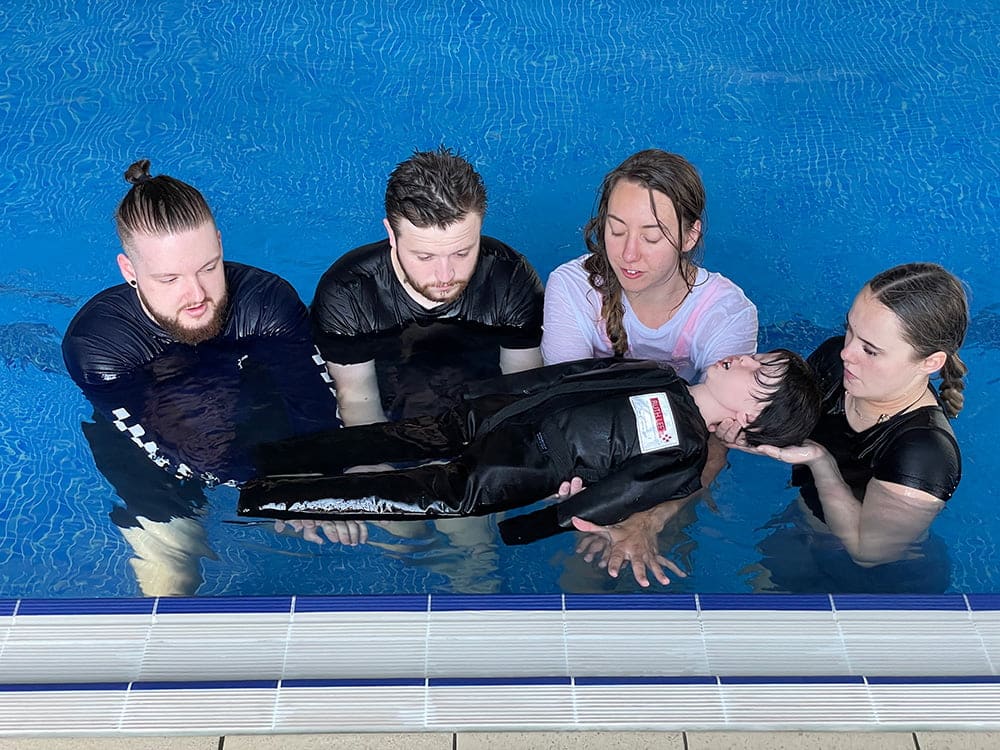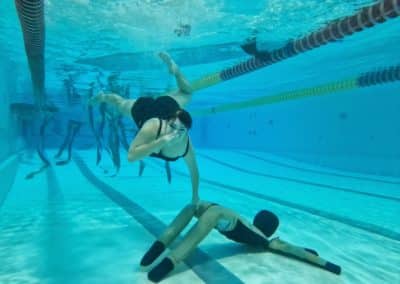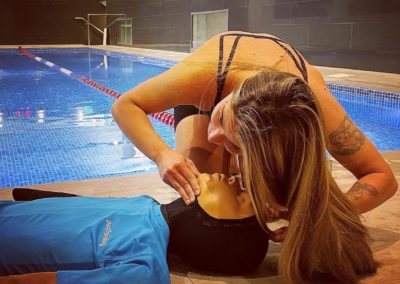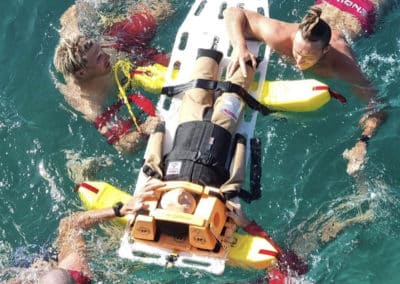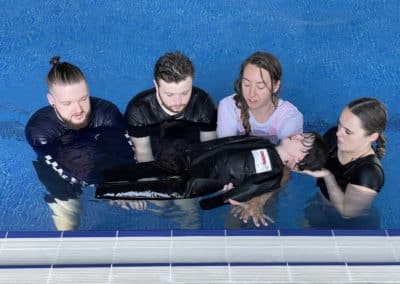At the 2023 World Conference on Drowning Prevention, perhaps the number one topic we discussed with delegates was how to best prepare lifeguards to perform at their best. The certification process tests certain capabilities but also has limitations (according to those we spoke to).
Are your lifeguards fit for the job?
Assessing occupational fitness was a hot topic on our booth – sure, the assessment process might affirm swimming ability, but many people thought it did not go far enough to ensure that lifeguards were fit enough to perform certain rescue tasks, including retrieving a body from the bottom of the pool, or towing an unconscious casualty to the poolside.
Though we may all have trained with them for years, a plastic half-torso is NOT representative of a real casualty. With no limbs and a reduced weight, they do not provide a realistic rescue experience when it comes to recovering a body from the bottom of a pool. The rigidity of plastic is also not representative of an unconscious casualty who is more likely to be ‘floppy’.
So how can we improve physical conditioning?
Occupational fitness should look closely at the tasks a lifeguard may be expected to perform in their role and use this as the minimum benchmark for fitness levels. If you have faced the tragedy that is an unconscious casualty at the bottom of a pool, you will know that even with buoyant forces acting on that body, the weight will still be significant when attempting to lift them to the surface.
Likewise, once at the surface, towing that weight to the side does require a high level of strength and cardiovascular ability.
Using the Pool Rescue manikin, you can create a whole range of physical tasks that are more closely related to the real, occupational standards required of lifeguards. With an adult manikin weighing 30kg, it is easy to see how this manikin is much more representative of a real casualty.
Some delegates at the World Conference told us they use their manikin to set up a range of different occupational fitness tests, including repetitive diving and lifting the manikin to the surface. Muscle memory is created, and lifeguards become physically stronger in a way which benefits their rescue capabilities.
Likewise, they complete repetitive tows to assess their cardiovascular strength, a skill they will likely need while working as a lifeguard.
Essentially, occupational fitness testing is an important point to consider when assessing lifeguards – it is one thing to be able to swim a set distance quickly – but that does not reflect the physical strength required to handle an unconscious casualty.
It’s a mindset…
In the real world, there isn’t always a positive outcome and building mental resilience is an essential part of being a lifeguard. Many people we spoke to at the World Conference were concerned about the best ways to prepare lifeguards, who are often young people, to cope mentally if a rescue has a poor outcome.
PTSD and other mental trauma illnesses can result from poorly preparing people to face the reality of their rescue work so we should do all we can to make sure that training is as realistic as possible.
In fact, one contact from the World Conference on Drowning Prevention was talking to us about how lifeguard training should be progressive, to better prepare people for the possibility of mental trauma. This could involve lifeguards first training with the Pool Rescue manikin (which is a submersible manikin offering a realistic size and weight, with a face mask) and then moving on to the Advanced Water Rescue manikin, which is a high-fidelity medical simulation designed specifically for drowning scenarios.
Proud to serve the drowning prevention community
At Ruth Lee we have been manufacturing water rescue manikins for over 20 years and we are proud to be part of the community working to reduce the statistics on drowning. Through effective training, we believe we can prepare rescuers, including lifeguards to be both physically and mentally prepared for what the job may throw at them. Our manikins help to build skills and confidence meaning that when a genuine emergency occurs, they are more than certified… they are rescue-ready!
